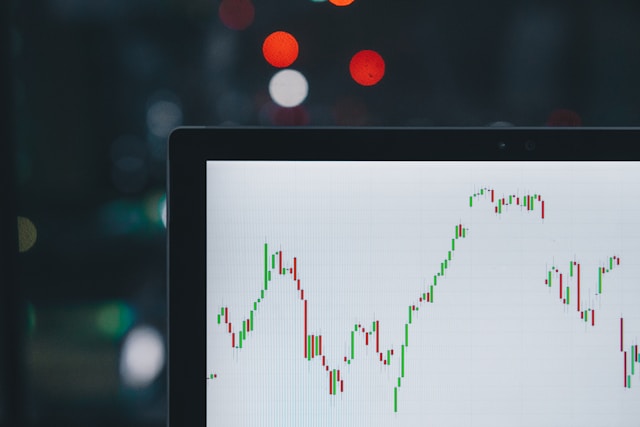Have you ever watched the numbers on the trading screen flicker and thought, “Is there a way to make this volatility work for me?” Well, the answer is yes, especially when it comes to indices trading. Index trading allows you to invest in a segment of the market, such as technology or finance, without having to pick individual stocks. This broad exposure can be a double-edged sword, but with the right approach, you can wield it to your advantage. Let’s explore how you can make market fluctuations work for you.
To leverage market fluctuations in index trading, here are a few strategies:
- Diversification: Since an index provides exposure to a diverse range of securities, it inherently reduces unsystematic risk. This diversity can help mitigate the volatility associated with individual stocks.
- Understanding Market Cycles: Indices often follow cyclical patterns. Recognizing these can allow traders to predict potential rises and dips within the market.
- Using Stop-Loss Orders: To protect your investments from significant downturns, implement stop-loss orders which automatically sell your asset at a predetermined price.
- Hedging: Use index options or futures contracts to hedge against your index investments, thus offering protection during downturns while allowing for participation in the uptrends.
By combining these strategies with a keen eye on market news and economic indicators, traders can position themselves to potentially profit from the volatility that sends many investors into a panic. Timing, as with all trading, is crucial. A well-planned entry and exit strategy can ensure that you’re not left holding the bag when the market turns.
Finally, while market fluctuations can be advantageous, they can also lead to losses. Therefore, it’s essential to continuously educate yourself, stay disciplined with your investment thesis, and never invest more than you can afford to lose. With these tactics, index trading can be a powerful tool in your investment arsenal.
Mastering the art of timing
Timing is everything in trading, and this rings especially true when dealing with indices. Market fluctuations, while they might seem random at first, often follow certain patterns or are influenced by external factors such as economic indicators or geopolitical events. By keeping a keen eye on these influences, you can anticipate movements in the indices. For example, a positive jobs report in the US might boost the S&P 500, offering a strategic entry point for traders. Learning to read these signs will allow you to time your trades more effectively, entering and exiting positions during periods of favorable movement.
Beyond economic data, it’s crucial to tap into the rhythm of the market. This means not just looking at the calendar for scheduled releases, but also being aware of earnings seasons, fiscal policy announcements, and even significant global events that could sway investor sentiment. By understanding these cycles and events, a skillful trader can adjust their strategy to either ride an upcoming wave or take a defensive stance, ensuring they are appropriately positioned to respond to the fluctuations these events might cause in market indices.
Embracing technical analysis
If mastering timing is the first step, then embracing technical analysis is your second. Technical analysis involves examining charts and using statistical measures to predict future market movements. While it can seem daunting at first, understanding a few key concepts can greatly improve your trading outcomes. For instance, by identifying support and resistance levels, you can better gauge when an index is likely to change direction. Similarly, moving averages can help you identify trends, allowing you to ride waves of momentum in the market. These tools are invaluable for navigating the choppy waters of index trading.
Once the basics of chart reading are down, adding more sophisticated technical analysis tools, like Fibonacci retracements or Bollinger Bands, can provide deeper insights into market behavior. These tools can help traders pinpoint more precise entry and exit points by indicating potential reversals or continuation patterns. With a plethora of technical analysis software available, tailoring these tools to fit personal trading styles has never been easier, allowing for a more nuanced approach to index trading.
Leveraging economic indicators
While technical analysis focuses on charts and patterns, another dimension to consider is the broader economic landscape. Economic indicators like GDP growth rates, unemployment figures, and consumer confidence indexes can significantly impact market sentiment and, consequently, indices. By staying informed about these indicators, you can anticipate market reactions and adjust your trading strategies accordingly. For example, a higher-than-expected inflation report may cause a dip in indices, presenting a buying opportunity for the vigilant trader.
Monitoring specific stocks, such as the smci stock price, can also provide insights into how individual companies respond to economic shifts. Understanding these dynamics can help traders make more informed decisions in a fluctuating market.
In times of economic uncertainty, certain indices can offer a haven or indicate where the next market move might originate. For instance, tracking commodity-based indices could give insights into potential inflationary trends, while technology-heavy indices might signal investor sentiment on future growth. In this way, a detailed understanding of various economic sectors and their indicators becomes a powerful asset in a trader’s toolkit, shedding light on potential market directions and providing a competitive edge.
Implementing a solid risk management strategy
No matter how accurately you predict market movements, there’s always a degree of uncertainty in trading. Here’s where a solid risk management strategy comes into play. This could involve setting stop-loss orders to minimize potential losses or diversifying your portfolio to spread risk. The idea is to protect your capital in the face of unexpected market downturns, ensuring you live to trade another day. Remember, it’s not just about making profits but also preserving your investment.
While risk management is foundational, another aspect often overlooked is the psychological component of trading. Dealing with market fluctuations can be emotionally taxing, making it easy to veer off course. Mental resilience, alongside practical tools like a trading journal, ensures that decisions are made on analysis rather than impulse. Recording strategies, successes, and failures help in fine-tuning the approach and maintaining discipline, which is as crucial as any tactic for managing risk and exploiting market movements.
The power of patience and persistence
Last but certainly not least, patience and persistence are perhaps your greatest allies in the realm of index trading. Market conditions can change rapidly, and today’s loss could be tomorrow’s gain. The key is to maintain a level head and stick to your trading plan, resisting the urge to make impulsive decisions based on short-term market movements. Over time, with experience and continued learning, you’ll find it easier to navigate market fluctuations and use them to your advantage.
In conclusion, index trading offers a unique opportunity to capitalize on market fluctuations, but it requires a strategic approach. By mastering the art of timing, embracing technical analysis, leveraging economic indicators, implementing a solid risk management strategy, and practicing patience and persistence, you can tilt the scales in your favor. Remember, the aim is to make informed decisions based on a comprehensive understanding of market dynamics, turning volatility from a challenge into an opportunity. Happy trading!
Index trading is not a sprint, it’s a marathon. The market will have its ups and downs, but it is the persistent trader who often reaps rewards. This long-term perspective requires one to look beyond the noise of daily fluctuations and focus on larger trends. By adopting a steadfast approach and continuously honing their trading skills, investors can improve their proficiency in forecasting and leveraging these market fluctuations. This results not only in growth in trading acumen but also potentially in profits over time.







